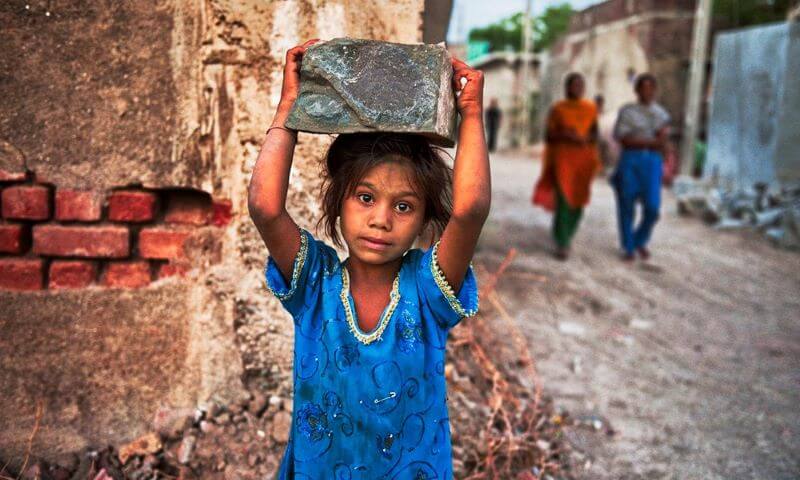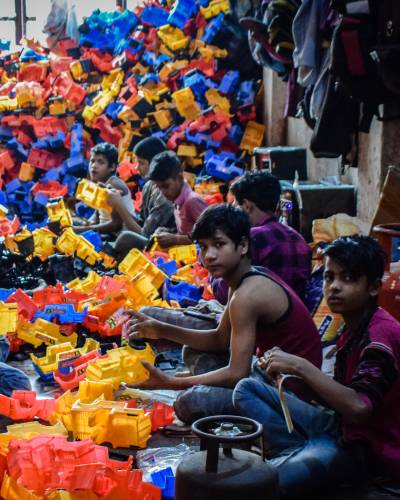Child Labourer Returns Home With The Efforts of KSCF


The incident is from Misrauliya village located in Chiraiya block of East Champaran district of Bihar, from where adults and children often move to cities and metros in search of work. Nitesh Kumar, age 13, also moved to Bengaluru in April 2021 in search of work. However, since Nitesh was a minor, he was soon apprehended by the local police in Bengaluru and sent to Bosco Yuvodaya, Gandhi Nagar, a children’s home in Bengaluru.
When the KSCF activists reached Misraulia village on 21st August 2021 for their awareness campaign and follow up visit to their earlier intervention, they were informed of Nitesh being missing by local ward member Shambhu Rai. Hearing the problem of the family, KSCF activist took an application from Nitesh’s family in the name of the institution and worked in coordination with its partner organization Bachpan Bachao Andolan (BBA) to find Nitesh.
BBA’s team was sent to Bengaluru where they met the local Child Welfare Committee and the Director to clarify the identity of the child and verify the same with his parents. During all these process, the ward member of Misraulia village was also kept in loop. After the necessary procedures, the child’s father Surat Manjhi reached the children’s home in Bengaluru and on 22 September, Nitesh was united with his family and reached his village with the support of KSCF. On their son’s return, Nitesh’s family members passionately thanked the members of the campaign team.
Join the movement and contribute to the solution – donate to KSCF today.
Understand The Child Labour In india
The term “child labour” is often defined as work that deprives children of their childhood, their potential and their dignity, and that is harmful to physical and mental development. It refers to work that:
- is mentally, physically, socially or morally dangerous and harmful to children;
- interferes with their schooling by depriving them of it or affecting their attendance and concentration
Many children in child labour work in slavery, separated from their families and are exposed to serious hazards and illnesses.
Child labour is both a cause and consequence of poverty. Household poverty pushes children into the labour market, perpetuating poverty across generations, slowing economic growth and social development.
It prevents children from gaining an education and skills that will lead to an adulthood of decent work opportunities. Inequality, lack of education, consumerism, discriminatory practices as well as traditions and cultural expectation are among factors that play a role in the occurrence of child labour in India.
There are many ways to prevent child labour, like you can Donate online & prevent child labour. See the happy childhood they deserve. Your small contribution will make a big difference in their lives!
According to data from Census 2011, the number of child labourers in India is 10.1 million of which 5.6 million are boys and 4.5 million are girls. The latest global estimates indicate that 160 million children – 63 million girls and 97 million boys – were in child labour globally at the beginning of 2020, accounting for almost 1 in 10 of all children worldwide
Across India child labourers can be found in the agriculture, industry and service sectors such as in brick kilns, carpet weaving, garment making, domestic service, food eateries, sugarcane farms, fisheries and mining. Children are also at risk of various other forms of exploitation including sexual exploitation and production of child pornography.
Due to long working hours and hazardous work, children in child labour face a number of problems. The conditions in which children work are mostly unhygienic and toxic for their health. Stress, depression, tuberculosis, night blindness and back pain are some of the most common health problems faced by such children. Child labourers can suffer from long-term health problems such as due to malnutrition, exposure to chemicals, abuse, injuries, exhaustion, and psychological harm. These children are often subjected to sexual abuse. May be you will be thinking about How to stop child labour in India? There many solutions to stop child labour you just need to take your first step ahead.
The National Sample Survey Organisation’s 2017-18 household survey put the number of out-of-school children in India (6-17 years) at 3.22 crore. In January 2020, for the first time, the school dropout rate in India was less than 3%, but Covid-19 will undo that. Globally, more girls are likely to be affected at pre-primary and upper secondary levels, while both boys and girls are at a greater risk of not returning to universities.
Below are the Steps and ways to prevent Child labour in india –
- Send more children to school
- Educate yourself with client laws
- Be vigilant
- Volunteer with movement initiators
Below points are about role of Child labour NGO –
- Execute projects & promote welfare
- Ensure holistic development
- Perform humanitarian functions


Videos
20 Years of Global March Against Child Labour
Nobel Peace Laureate Kailash Satyarthi’s Message on 20 Years of Global March Against Child Labour
Global March Against Child Labour which lead to the adoption and ratification of ILO Convention 182 on Worst Forms of Child Labour
Give children the happy childhoods they deserve
Being India’s most trusted Child labour NGO in India we believe that every Indian citizen is an important stakeholder of the Justice For Every Child campaign. Your donation will enable the creation of an accountable and sustainable child protection ecosystem to keep our children safe.
